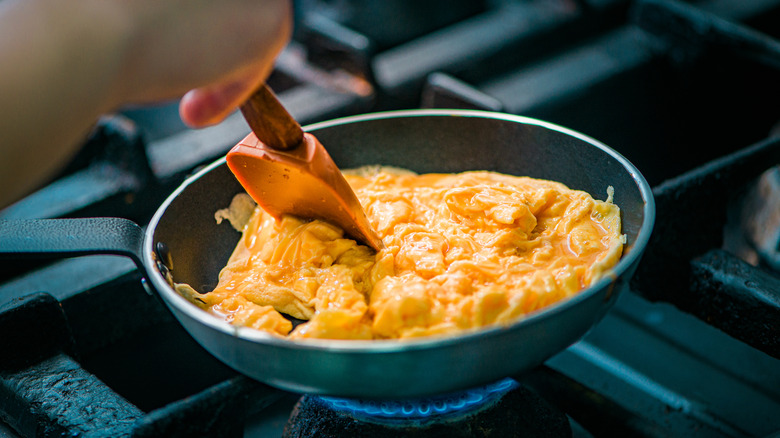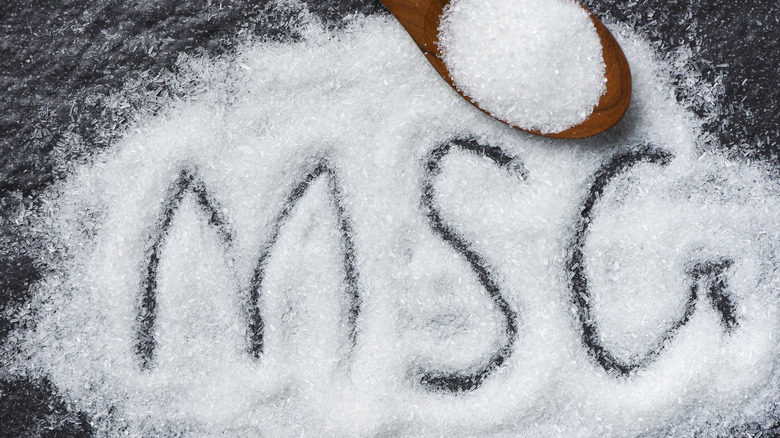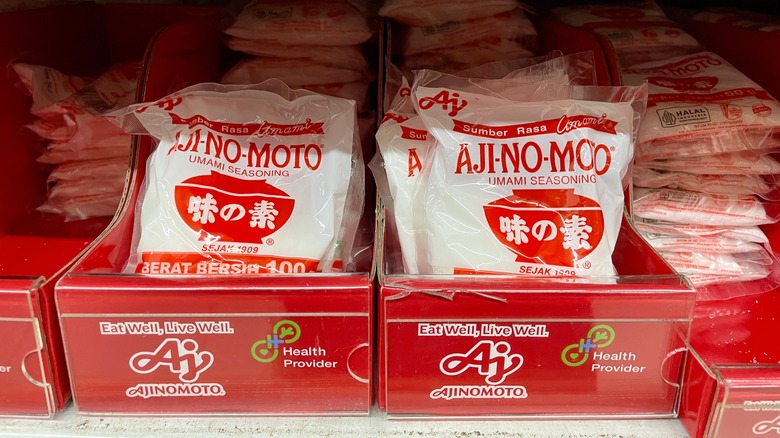This Underrated Seasoning Will Take Scrambled Eggs To The Next Level
Scrambled eggs are one of those simple dishes that are deceptively difficult to make perfectly, due in large part to the fact that they're so easy to overcook. Once you have the technique down pat, though, you can start branching out with how you season them. Salt and pepper, obviously. Fresh parsley, thyme from your herb garden, or even sage are delightful as garnishes. But have you ever considered adding MSG?
MSG, which stands for monosodium glutamate, is a much-maligned seasoning that people most often recognize from Chinese food — or sometimes, recognize by its absence from Chinese food, with many Chinese restaurants in the U.S. featuring a "No MSG" label on their menus. However, this flavor enhancer, which comes in the form of sprinkle-able crystals, will seriously kick up your eggs to a different hemisphere.
You can mix it with salt, using 1 part MSG per 2 parts salt. Scramble your eggs as you normally do, and when you go in for that first bite, prepare yourself for an umami bomb of rich, deep flavor.
Just what exactly is MSG and how did it get such a bad rap?
MSG is not a scary, dangerous ingredient. As its name indicates, it's a chemical compound of sodium and glutamic acid, with glutamic acid being the source of the umami flavor. While it does occur naturally in some foods, it is also mostly manufactured and sold as little MSG crystals.
Where did all the bad press for MSG begin? In the 1960s a doctor wrote a letter to the New England Journal of Medicine complaining of heart palpitations and weakness. He blamed Chinese food, and MSG in particular. Many readers chimed in with similar tales of woe, and subsequent flawed studies only exacerbated the issue, playing right into a distinct Western feeling of xenophobia against Asian cuisine.
It was only in the 2010s that MSG's reputation as a flavor enhancer made a comeback, with articles on the Internet starting to pop up and explain to the greater public that MSG isn't harmful at all. You could actually be ingesting MSG already without even realizing it, as it's an ingredient in Doritos and the wildly trendy Kewpie mayo, as well as countless other processed foods.
There's also the fact that, despite containing the word "sodium" in its scientific name, MSG actually has 70% less sodium, per 100 grams, than kosher salt, making it an excellent substitute, especially for people who have to watch their sodium intake.
Eggs & MSG – the perfect combo?
Chinese people have been using MSG in their cooking for decades, after it was discovered by a Japanese scientist at the beginning of the 20th century and spread to other countries shortly thereafter. One classic way to use it is to enhance the flavor of their fried rice, a dish that typically contains eggs scrambled in.
So we know that MSG works incredibly well with eggs; what other egg dishes can you find a use for MSG in, then? If it kicks up the flavor of scrambled eggs, you can bet it would taste divine in an omelet, especially one that contains mushrooms and bell peppers (and how about a little sprinkle on those breakfast potatoes, too?). If you're making egg drop soup at home, you could also replace some of the salt in the pot with MSG. And while you're at it, try marinating soy sauce eggs with a little MSG for the ultimate umami bomb.


